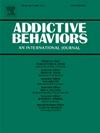形态逆分化揭示了网络游戏障碍中视觉-注意结构相似性的增强
IF 3.6
2区 医学
Q1 PSYCHOLOGY, CLINICAL
引用次数: 0
摘要
形态测量反散度(MIND)方法为构造结构相似网络提供了一种可靠的方法。虽然研究已经确定了网络游戏障碍(IGD)中功能网络的异常连接,但其MIND网络模式的改变尚不清楚。方法对110名IGD个体和158名休闲游戏用户(RGU)进行分析,构建基于mind的网络。我们比较了大规模子网络和个别地区的平均差异。我们还进行了边缘分析,以确定单个连接的细微变化。此外,我们还研究了拓扑特性,包括小世界性、效率和节点中心性。结果IGD患者的视觉和腹侧注意/突出网络(五个显著边)的相似性增加,且与IGD严重程度呈正相关。此外,还发现了几个加强的连接,包括默认感觉运动网络和默认视觉网络。网络拓扑分析显示,IGD的归一化特征路径长度显著减少(t = 2.357, p = 0.019),这可能表明大脑网络拓扑向更随机化的转变。此外,节点中心性也升高(p <;0.001,未校正)在相同的区域,包括视觉、注意力和前额叶区域,显示与IGD严重程度呈正相关。我们的研究结果表明,过度的网络游戏改变了视觉和注意网络之间的相似性,并增加了这些区域的节点中心性,为研究IGD的神经解剖学机制提供了新的见解。本文章由计算机程序翻译,如有差异,请以英文原文为准。
Morphological inverse divergence reveals enhanced visual-attention structural similarity in internet gaming disorder
Background
The morphometric inverse divergence (MIND) method offers a reliable approach for constructing structural similarity networks. While studies have identified abnormal connectivity in functional networks in internet gaming disorder (IGD), its MIND network pattern alterations remain unclear.
Methods
We analyzed 110 IGD individuals and 158 recreational gaming users (RGU), constructing MIND-based networks. We compared mean differences across large-scale sub-networks and individual regions. We also conducted edge analysis to identify subtle changes in individual connections. Additionally, we examined topological properties, including small-worldness, efficiency, and nodal centrality.
Results
Individuals with IGD exhibited increased similarity between the visual and ventral attention/salience networks (Five significant edges), which was positively correlated with IGD severity. Additionally, several strengthened connections were identified, involving the default-sensorimotor and default-visual networks. Network topology analysis revealed a significant reduction in normalized characteristic path length in IGD (t = 2.357, p = 0.019), which may indicate a shift towards a more randomized brain network topology. Further, nodal centrality was also elevated (p < 0.001, uncorrected) in the same regions, including the visual, attentional, and prefrontal regions, showing a positive association with IGD severity.
Conclusion
Our findings revealed that excessive online gaming alters increased the similarity between the visual and attention network and increases nodal centrality in these regions, offering new insights into the neuroanatomical mechanisms underlying IGD.
求助全文
通过发布文献求助,成功后即可免费获取论文全文。
去求助
来源期刊

Addictive behaviors
医学-药物滥用
CiteScore
8.40
自引率
4.50%
发文量
283
审稿时长
46 days
期刊介绍:
Addictive Behaviors is an international peer-reviewed journal publishing high quality human research on addictive behaviors and disorders since 1975. The journal accepts submissions of full-length papers and short communications on substance-related addictions such as the abuse of alcohol, drugs and nicotine, and behavioral addictions involving gambling and technology. We primarily publish behavioral and psychosocial research but our articles span the fields of psychology, sociology, psychiatry, epidemiology, social policy, medicine, pharmacology and neuroscience. While theoretical orientations are diverse, the emphasis of the journal is primarily empirical. That is, sound experimental design combined with valid, reliable assessment and evaluation procedures are a requisite for acceptance. However, innovative and empirically oriented case studies that might encourage new lines of inquiry are accepted as well. Studies that clearly contribute to current knowledge of etiology, prevention, social policy or treatment are given priority. Scholarly commentaries on topical issues, systematic reviews, and mini reviews are encouraged. We especially welcome multimedia papers that incorporate video or audio components to better display methodology or findings.
Studies can also be submitted to Addictive Behaviors? companion title, the open access journal Addictive Behaviors Reports, which has a particular interest in ''non-traditional'', innovative and empirically-oriented research such as negative/null data papers, replication studies, case reports on novel treatments, and cross-cultural research.
 求助内容:
求助内容: 应助结果提醒方式:
应助结果提醒方式:


